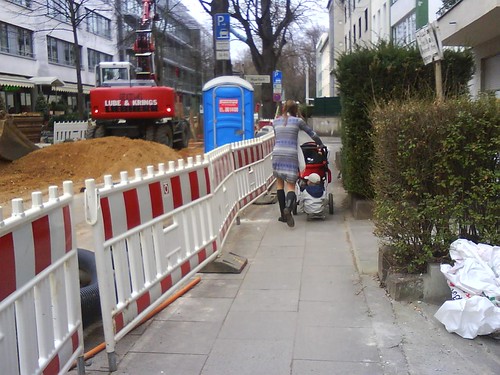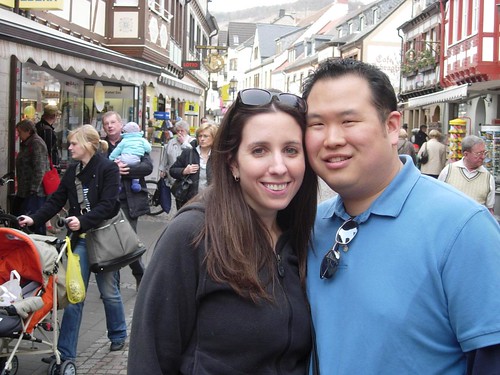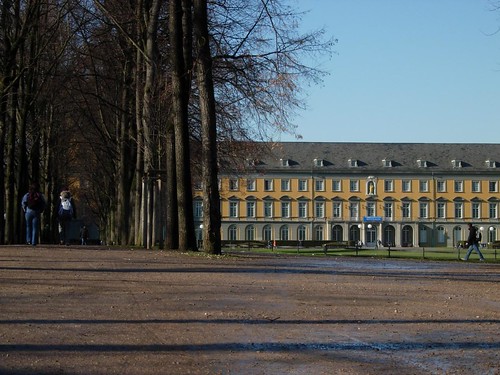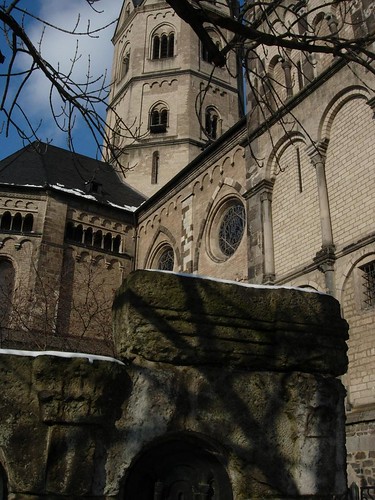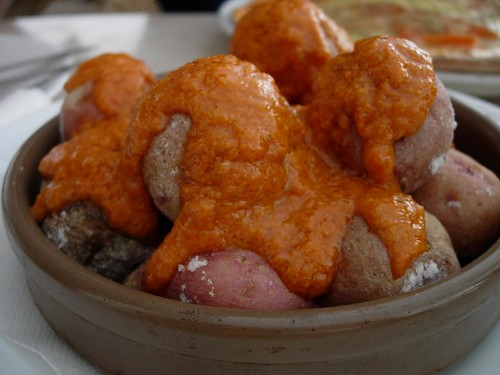Not to be outdone by Culinspiration, I think it's time for a food post. In the spirit of going native, I have taken to making my own pretzels. Here's how it's done.
Ingredients
1 package dry yeast
1 teaspoon sugar
1/3 cup warm water
3 3/4 cups white flour
2 teaspooons salt
additional 1 cup water
4 tablespoons baking soda
4 cups water
1-2 tablespoons coarse salt or seasme seeds
Dissolve the yeast and the sugar in 1/3 cup warm water. Sift the flour into a large bowl, and sprinkle with salt. When the yeast mixture is foamy, add it to the flour. Gradually add just enough of the remaining water to make a strong, elastic, and slightly wet dough. (I use almost the full cup.)
Knead the dough for at least 10 minutes, adding as little additional flour as possible. (I'm not kidding about kneading for at least 10 minutes. You want the gluten to develop.)
Cover the dough with plastic wrap, and allow to rise for an hour and fifteen minutes. Your dough should be a smooth, fat ball, like this:
On a floured surface, divide the dough into twelve equal pieces. Then roll each piece into a thin 18" snake, slightly fatter in the middle than at the ends. Twist each piece into a pretzel. Twist the ends as illustrated below, then attach the ends to the top of the arch to form a pretzel. If the dough is dry, use a drop of water to hold the ends in place.
Place each pretzel on parchment paper, cover with plastic wrap, and allow to rise for 15-20 minutes.
Preheat oven to 425 F (220 C).
Combine baking soda with 4 cups water and bring to a boil. Dunk the pretzels one or two at a time for 30 seconds. Lay the pretzels on baking sheets lined with parchment paper. Sprinkle with coarse salt or sesame seeds while still wet. (About 1/4 teaspoon coarse salt per pretzel is enough. A little goes a long way.)
Bake the pretzels for 20 to 25 minutes until they are a dark golden brown. Serve fresh with butter, mustard, or cheese.
The Germans call pretzels Laugenbrezen, which means "lye pretzels." The secret to the distinctive crunchy exterior, it seems, is to dunk the dough in a 4% solution of NaOH (sodium hydroxide). For home use, baking soda is a suitable substitute, but using a lye solution is the right way to do it.








